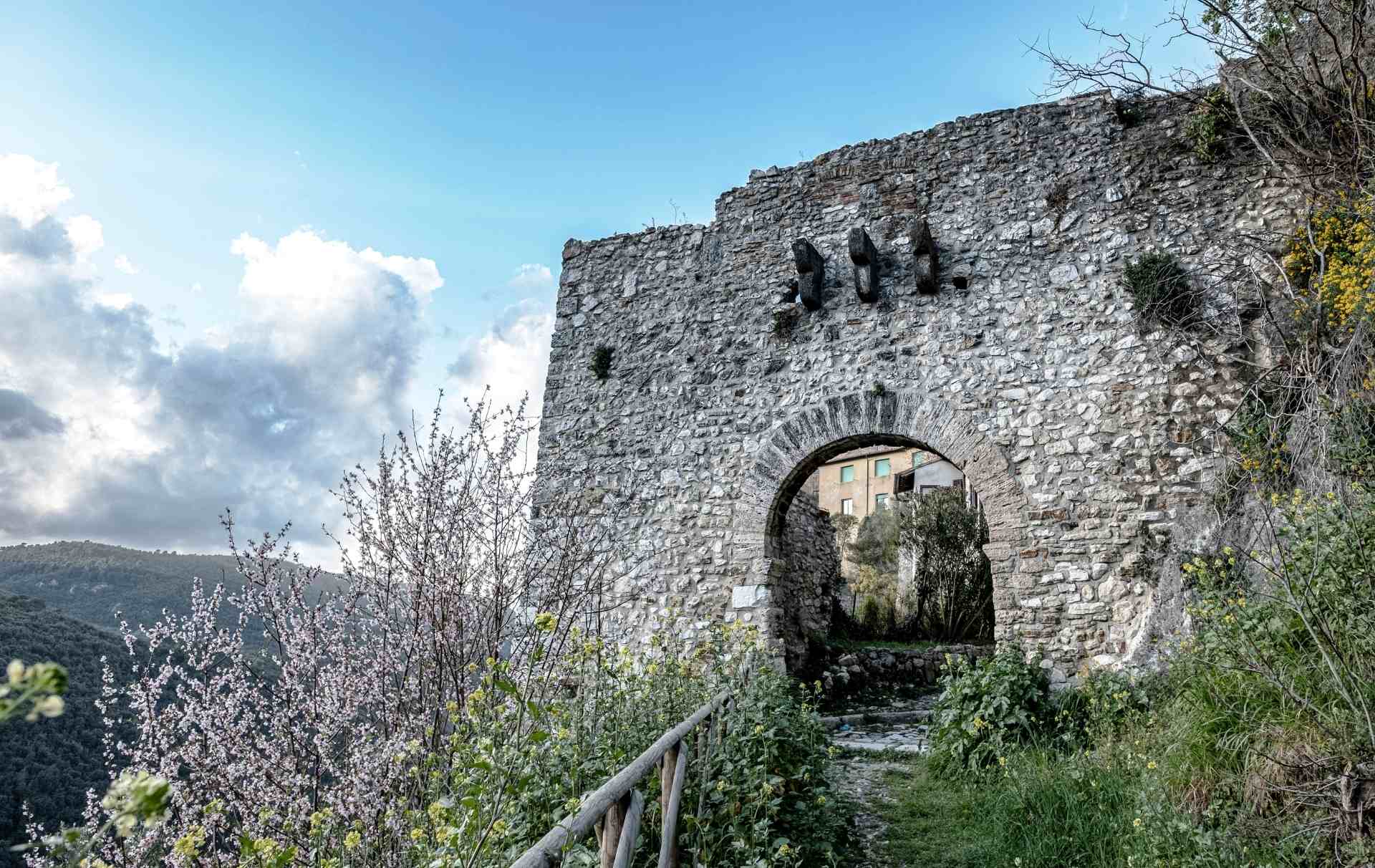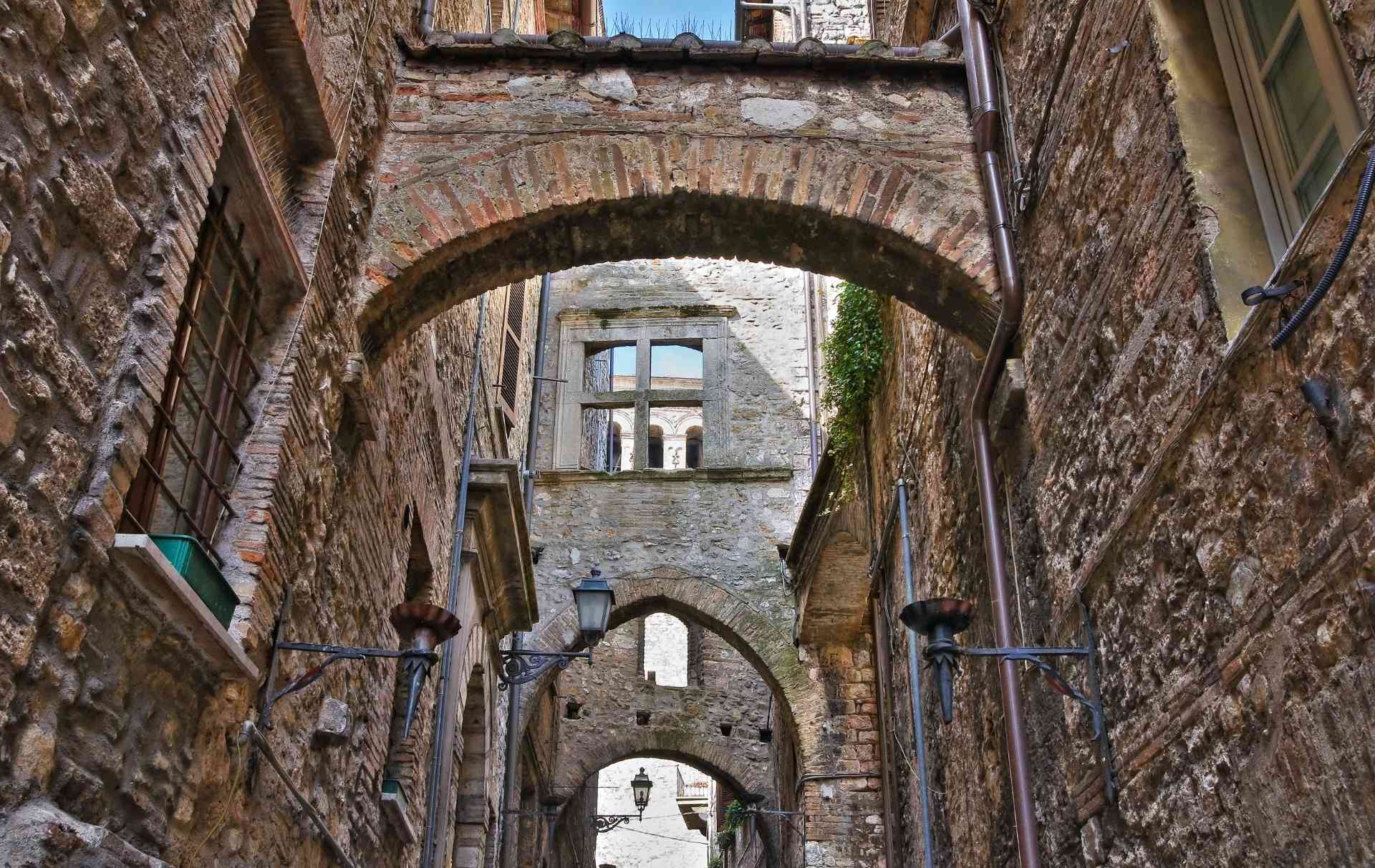Not much remains of the ancient castle of Schifanoia, now a little village but in the past sentinel on the gorge between Poggio and Otricoli.
The ancient fort of Lombard origin of Schifanoia.
The village in the territory of Narni, hids probably in its name its longobard origin, because schiffa means “revenge”, while nauda means “pasture”, even if the castle was built in the XIII century around a massive tower collapse only in 1925.
From the defensive structure remains only some elements of the city walls , ruins of the minor towers and the entrance which leads to the parish church.
Into the village , along the Way of the Protomartyrs, is worth mentioning the beautiful Church of San Michele Arcangelo.
The Church of San Giovanni Battista.
The Church of San Giovanni Battista is located in the old town of the village and was built around the 14th century.
The facade is simple and is overlooked by a little niche with the statue of the Madonna.
Inside the church there are several frescoes which go from 1300 to 1500, the most important is the big fresco which represents on to the Madonna with Bambino between the Saints Rocco and Sebastiano and below the redeemer between the Saints Antonio and Biagio, painted by an artist inspired by the great masters of the ‘500.
In the chapel on the left there are frescoes inspired by the many that we find in other churches of the narnese.
Schifanoia
Schifanoia – 05035, Narni
The pretty village between Gramaccioli and Fongalle can be visited on foot.
We recommend parking near the main square.
Discover Narni.
Discover with us the interesting places near the village.
Or discover the points of interest of Narni and of its territory:

Piazza Galeotto Marzio
Placed at the end of Via Mazzini and enriched by beautiful palaces which faced it, Piazza Galeotto owes its name to the big humanist from

Pietra Gate
Faced on the slope which looks towards the valley, Pietra Gate (called even Porta delle Prede) is a suggestive medieval structure which give the name

Via del Campanile
A stair that goes from Via Garibaldi clambers up through one of the highest points of Narni: Via del Campanile is one of the most


